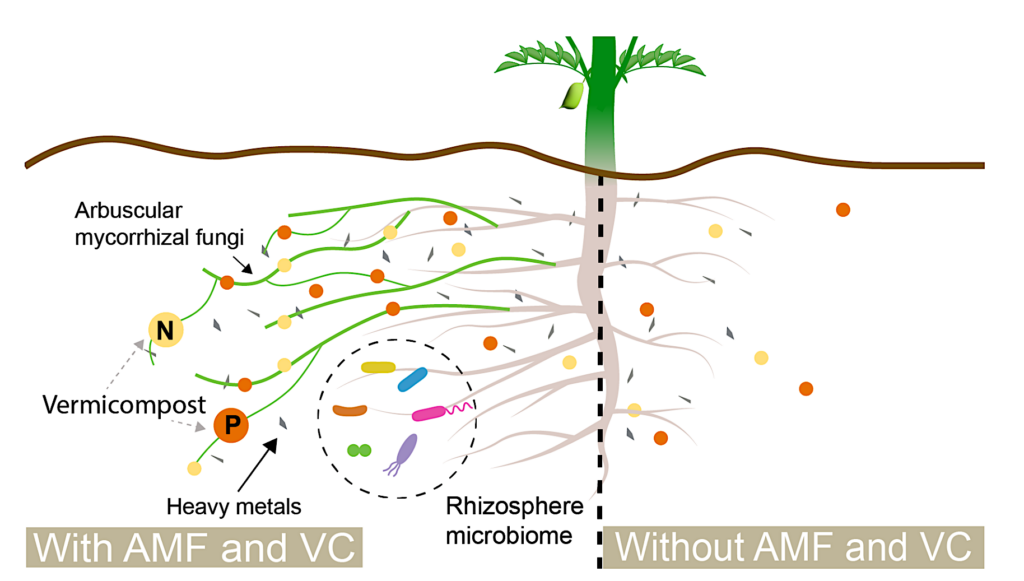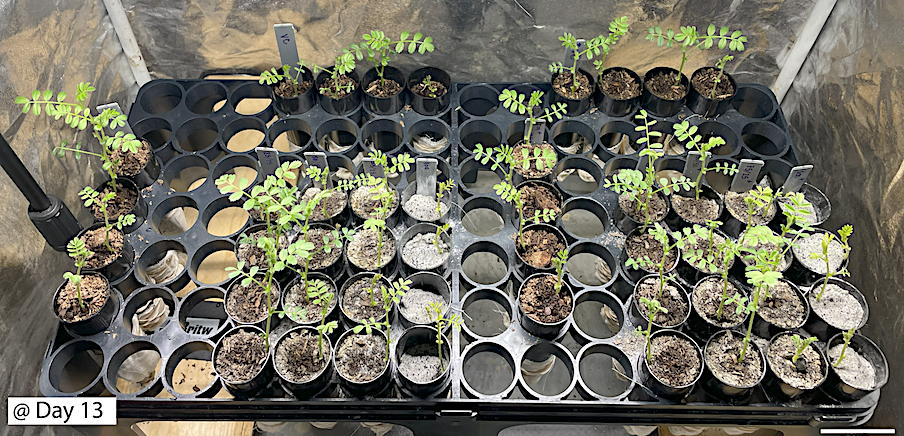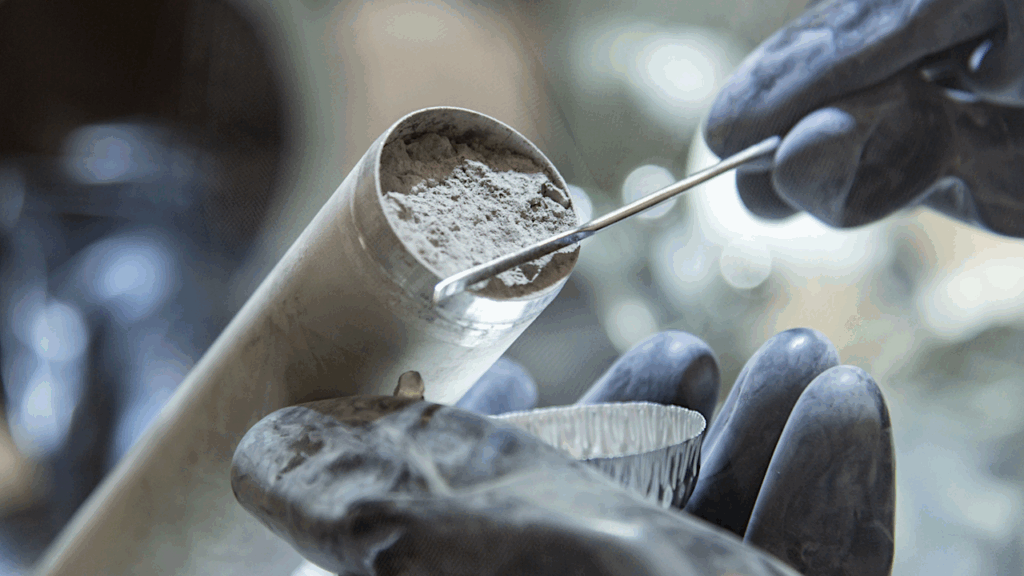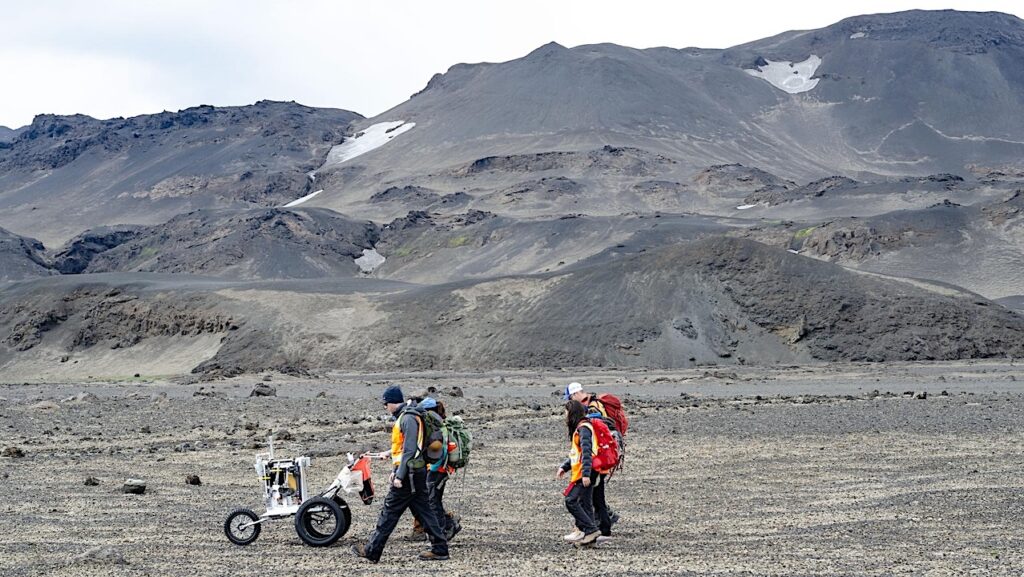From Dust To Seed: A Lunar Chickpea Story

Food sustainability is one of the most significant barriers to long-term space travel. Providing resources from Earth is not cost-efficient, and resupply missions are not viable to meet the needs of long-term life in deep space conditions.
Plants in space can provide a source of nutrition and oxygen, reducing the reliance on packaged foods, reducing resupply needs, and extending the duration of missions. Using lunar regolith simulant, we employ a novel methodology to create a sustainable and productive growth medium to support the cultivation of horticultural crops on the Moon.

Cicer arietinum, AMF and VC in the rhizosphere. Chickpea has a taproot reaching up to 30 cm with lateral root branching. The root with AMF has an extended surface area reaching otherwise inaccessible nutrients and sequestering heavy metals (HMs) from uptake. The root structure without AMF has less surface area, shorter roots, and fewer protective mechanisms against HMs. — biorxiv.org
Implementing microbial soil regeneration mechanisms derived from Earth, we leverage the interaction between Arbuscular Mycorrhizal Fungi (AMF) and Vermicompost (VC) to create a fertile LRS matrix. These amendments can sequester toxic contaminants, improve soil structure, and increase plant stress tolerance. We demonstrate the ability to produce chickpea (Cicer arietinum) in lunar regolith simulant augmented with AMF and VC under climate-controlled conditions.

At day 13, there were 100% germination rates. Experiments are labeled as in Figure 2. Potting mix shows large leaves and greater branching, whereas plants in lunar regolith simulant mixtures show signs of xenomorphism, with reduced leaf area, reduced amount of leaf growth, and smaller shoot height. Additionally, chlorophyll levels are lowest in LRS100 (leaf yellowing). — biorxiv.org
We cultivated chickpea to seed in a mixture containing 75% Lunar Regolith Simulant. Preliminary results suggest that higher LRS contents induce heightened stress responses. However, plants grown in 100% LRS inoculated with arbuscular mycorrhizal fungi demonstrated an average two-week survival extension compared to non-inoculated plants. This study provides, for the first time, a baseline for chickpea germination in varying mixtures of LRS and VC and will inform future studies as humanity goes back to the Moon.
Jessica Atkin, Sara Oliveira Pedro dos Santos
From Dust To Seed: A Lunar Chickpea Story – Full paper
Astrobiology








